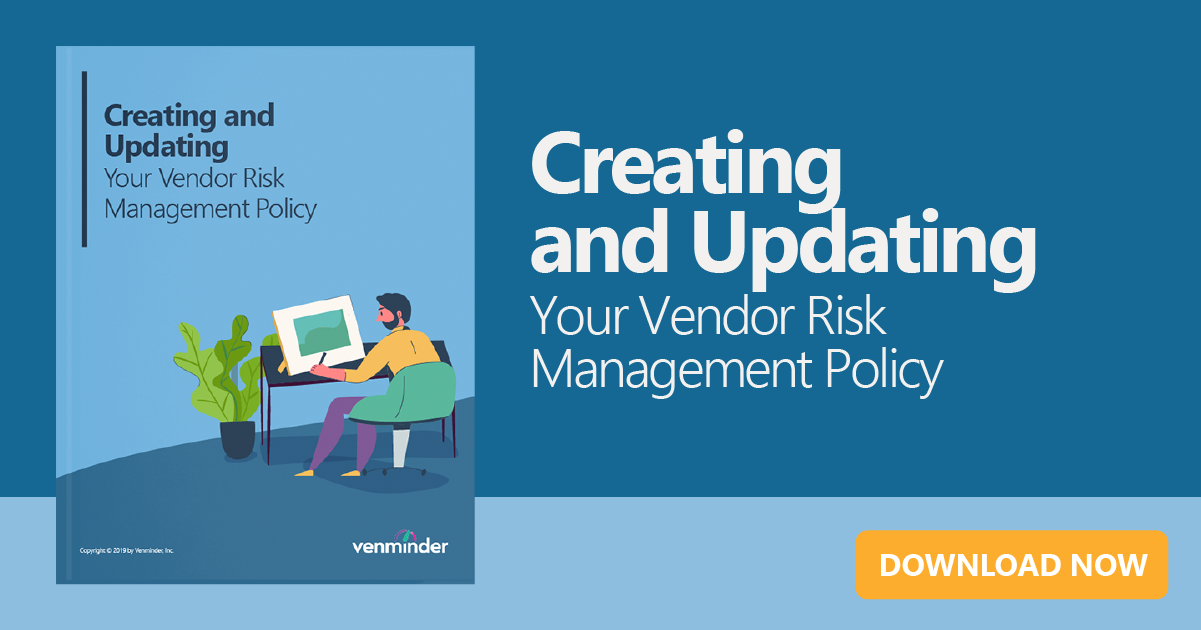“The days are long, but the years are short.” – Gretchen Rubin
As I sit back and reflect on vendor management in 2019, that’s the quote that comes to my mind immediately. This year, we didn’t really have any earth-shattering evolvement; however, we did have talks of an OCC Fintech Charter, criticism of the regulators themselves in OIG reports, massive data breaches such as the one with Capital One, exam cycles extended, leadership changes and more. When you really think about it, that’s still a lot to digest in one year. So, let’s discuss some of the major takeaways and lessons learned in 2019.
Major Takeaways and Lessons Learned in 2019
Here are five of the 2019 changes that I feel are the most impactful and important to discuss:
1. There’s a need for better cybersecurity plans.
Massive data breaches are happening more and more. Some notable ones in 2019 include the Capital One data breach that impacted more than 100 million and the Facebook data breach that shared data of 540 million users. And, there was a huge data breach settlement this year that’s worth mentioning. In 2017, the Equifax data breach exposed data of more than 147 million people. This year, Equifax agreed to a $575 million settlement, which may increase to upwards of $700 million. Equifax was faulted for a lot, but some of the main plan deficiencies that led to the breach included storing personal information on their network that they hadn’t secured, failure to patch the insecure network, a data breach notification timeframe that was insufficient and more. Breaches lead to large fines and impact your reputation greatly. Breaches at large companies, like Equifax, are a stark reminder that there is a heightened need for better, more comprehensive, functional cybersecurity plans across the industry.
2. The exam cycle extension is in full effect.
Now, if you’re a qualifying organization with under $3 billion in assets, meaning a “well-managed” one, then your examination cycle is extended from 12 months to 18 months. While this was certainly welcome news to many, my suggestion to you is to not let anything fall through the cracks with the extended period between your exams. Don’t let your policy grow stale, continue your ongoing monitoring, remain exam-ready at all times and basically keep doing what you’ve always been doing. If you don’t, then this change could be more of a burden than a blessing.
3. There have been leadership changes at major regulators.
Most notably, the changes happened at the Consumer Financial Protection Bureau (CFPB) and the Federal Reserve. The CFPB’s single-director leadership structure is in question and may be deemed unconstitutional, but we’ll have to wait until 2020 to see what happens with that as the Supreme Court takes up the case.
4. The OCC Fintech Charter was in consideration, until it wasn’t.
In fourth quarter, the charter was summarily rejected by courts. State agency challenges and opposition from other regulators are likely what led to the dismissal. This means fintechs will need to follow the same traditional path as everyone else. This was upsetting news to the fintech industry as the standard process isn’t quick and can take some time.
5. The CFPB held symposia in an attempt to define “abusive” in Unfair, Deceptive, Abusive Acts or Practices (UDAAP).
Regulators were criticized in Office of Inspector General (OIG) reports. As a result, a common trend across regulators in 2019 was more transparency. This past year, the new director of the CFPB, Kathy Kraninger, wanted to define abusive in an effort to accommodate this and provide more clarity. However, it’s still a work in progress.
Reminders for 2020
There are a lot of important points to remember but given the nature of the 2019 lessons and takeaways, I think there are two that are top of mind right now. These include the following:
- You must pay attention to the CFPB consumer complaints database. Enforcement actions, hefty fines, a poor reputation and more can likely be prevented if you’re reviewing the database regularly. If you see a pattern in the complaints, address them before the CFPB does. Trust me, you won’t regret being proactive.
- Customer service always matters. I think this is a given, but still needs to be said. No matter what, your customers are one of the most important assets to your business and the service you provide to them matters. Poor customer service, as in the UniRush case several years ago, or, like in the Equifax scenario, a failure to notify them promptly of events such as a data breach, can lead to reputational hits, enforcement actions and silent attrition.
To wrap up, I’ll leave you with this. As a best practice going into 2020, stay educated. Study new industry law and regulation, attend webinars and conferences, review enforcement actions and learn from them, follow the industry changes closely and implement what you learn into your program.
Update your vendor management program for your organization before the new year. Download the eBook.













